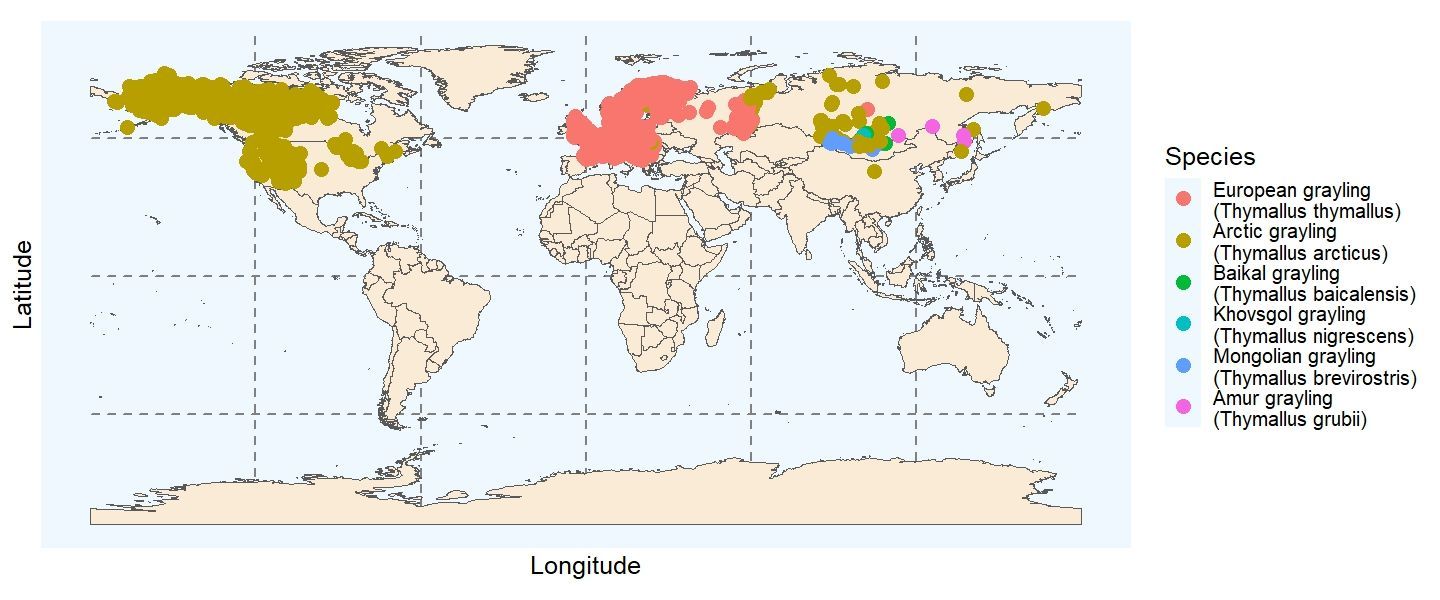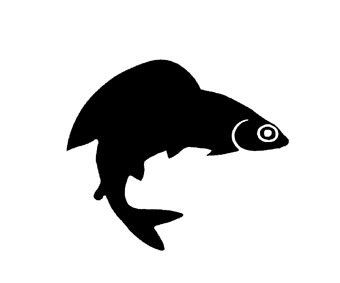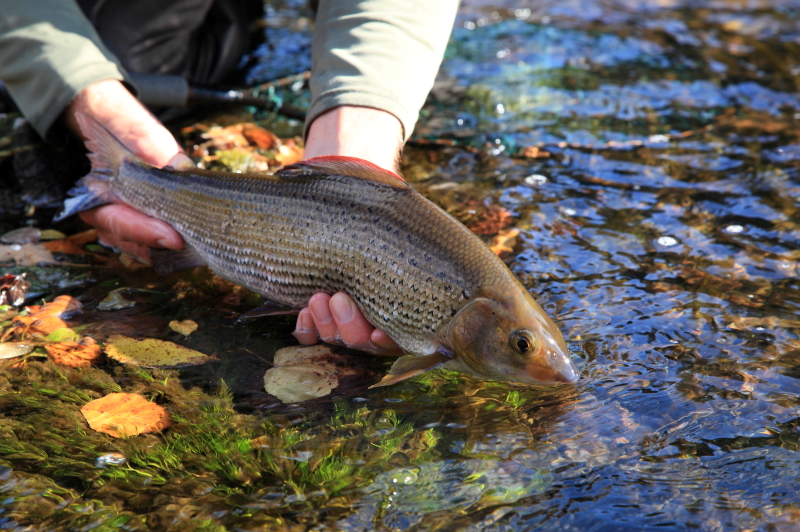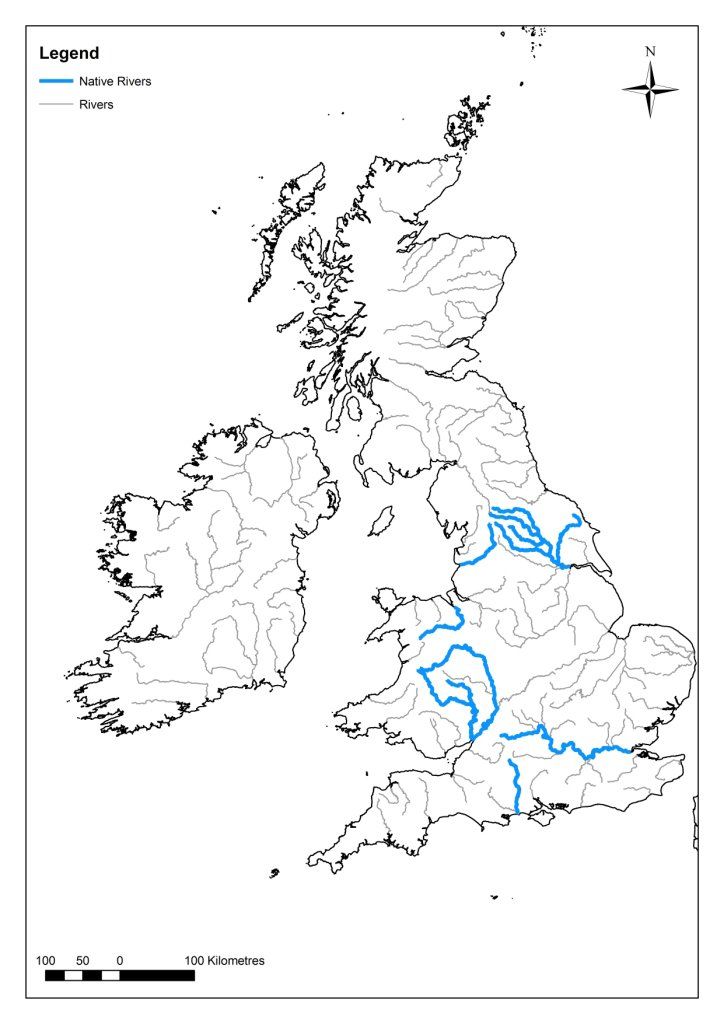Site built with:
Grayling Species
(Family: Salmonidae; sub-family, Thymallinae)
Because they have an adipose fin, grayling are included in the family Salmonidae, as sub-family Thymallinae. There is only one genus, but a number of species. These range across central and northern Eurasia and North America, as shown in the map.

Map 1 A map showing locations of grayling species recorded in the Global Biodiversity Information Facility.
There has been confusion concerning the diversity of grayling throughout the geographical range of the genus. Some newly described species have received little international attention, whereas other names commonly occur in the literature (although modern investigations based on morphology or genetics fail to reveal their existence). Trustee Dr Steven Weiss, a leading researcher in grayling taxonomy at Graz University in Austria, has provided the following list of 10 species of grayling for which there is strong support from genetic data, with two species being divided further into two sub-species, listed as such due to minimal genetic divergence from their closest relatives. Research on grayling phylogeny and genetic diversity continues.
European grayling have a streamlined body, a large "sail-like" dorsal fin and a relatively small inferior mouth in which the upper jaw projects slightly beyond the lower. Juveniles are silver/light green with bluish parr marks along the flanks that fade as the fish reaches 1 year of age. The large dorsal fin is only prominent once grayling have reached a body length of 25 mm.
Adults have a silvery grey/green back, greenish sides and a white under-body, with some scattered, small dark spots on the upper flanks. The distinctive large "sail-like" dorsal fin has four to five rows of red and black spots on an iridescent background. The dorsal fin in males becomes very brightly coloured in the spring breeding season, and is used in courtship and defensive/offensive displays. The fin is larger in males than females; the resulting dimorphism permits easy identification of the sexes. An adult grayling is typically 30 cm in length, but specimens can grow up to 60 cm.
European Grayling are found in the UK and central and northern Europe. Grayling colonised British rivers when Britain was still connected to continental Europe at the end of the Pleistocene and early Holocene, by the North Sea land bridge. The genetics of known native UK grayling populations reflects dispersal from continental Europe at a time when the rivers flowing out to the now east coast of England, joined with those of the Rhine system flowing across the land now inundated by the North Sea.
English river systems thought to host native populations of grayling include the Yorkshire Ouse, Trent, Hampshire Avon, Severn, Wye, Thames and Ribble. The Welsh Dee is also thought to host native grayling. Elsewhere, grayling have been introduced. There are no native grayling in Scottish rivers - all populations have arisen from introductions, the earliest being in the Clyde in the mid-nineteenth century. However, grayling generally thrive in the colder, clean waters, and are found extensively in the Annan, Clyde, Tweed and Tay systems, and in some of the rivers around the Forth. There are no grayling either in Northern Ireland or the Republic of Ireland.
There is no evidence to suggest there have been any introductions of grayling to UK rivers from overseas. Grayling are typically a freshwater species, but can tolerate brackish waters at the north of its range, outside of the United Kingdom.



